Blog • Understanding Publishing
Last updated on Apr 12, 2024
How to Write a Book Proposal in 7 Simple Steps
About the author
Reedsy's editorial team is a diverse group of industry experts devoted to helping authors write and publish beautiful books.
More about the Reedsy Editorial Team →Martin Cavannagh
Head of Content at Reedsy, Martin has spent over eight years helping writers turn their ambitions into reality. As a voice in the indie publishing space, he has written for a number of outlets and spoken at conferences, including the 2024 Writers Summit at the London Book Fair.
View profile →Do you have a nonfiction book idea and dream of securing a lucrative deal — all before you finish writing the actual book?
Well, you can.
We have two words for you: book proposal. In the nonfiction world, you can secure a book deal with a publisher by submitting a book proposal — a short document that pitches the essence and structure of your book.
In this post, we break down what a book proposal is, and how to write one that stands out from the slush pile. With the help of Reedsy's top editors, we’ve also created a free book proposal template you can download below. Let’s get started.

FREE RESOURCE
Book Proposal Template
Craft a professional pitch for your nonfiction book with our handy template.
What is a book proposal?
A book proposal is a document sent by nonfiction authors to pitch their book idea. Commonly 15-50 pages long, a book proposal includes an overview of the book, an author bio, comparable titles, potential marketing strategies, a chapter outline, as well as some sample chapters. It’s not a complete manuscript, but instead a chance to gain a publisher’s interest in your book.
It should build a complete argument for your book idea. According to developmental editor Katharine Barclay, every good proposal will cover:
- What the book is about,
- Why you're the perfect person to write this book,
- Who will buy the book, and
- How you are going to convey the message.
Above all, your proposal must also show an evidence of need. In other words: what is your unique premise? How will it benefit people who read it? Will readers care enough to buy it?
When successfully executed, a book proposal will convince a publisher to invest in you and your goal: a published book.
What are the common elements of a book proposal?
While some publishers will have different specifications for their preferred format, most book proposals follow a similar structure. Here are the most common elements:
- Overview of the book
- Market analysis
- Author bio and platform
- Marketing plan
- Comp titles
- Chapter outline
- Sample chapters
- Conclusion and writing timeline
Put together, this is the document that will convince a publisher to take a chance on your book.
How to write a book proposal
Bear in mind that there is no one-size-fit-all for book proposals. Think of the proposal as a house 一 depending on the circumstances, you may move the furniture around. Ultimately, the key is building the best argument for why your book idea deserves to be published.
1. Start the book proposal with an overview
Every proposal begins with an overview of the book you're planning to write. The overview covers what (or who) the book is about so that the acquisition editor has a clear idea of your proposed topic and the commercial appeal of the book.
Developmental editor and former literary agent Elizabeth Evans advises you to “write your overview as though you're writing the copy of your book jacket. Employ the same combination of vivid description, charm, and salesmanship the publisher will eventually use to woo book buyers.”
An overview will usually be less than two pages long and should hit the key facts about a book: its topic, themes, and intended audience. The overview will also provide insight into the significance and reach of the book, explaining why the subject matter is important and how this book is unique or will fill a gap in the market.
Perhaps most importantly, an overview includes the all-important “book hook" that engages readers.
Hook them in with your elevator pitch
Andrew Crofts, a ghostwriter who’s worked on multiple proposals before, shares his pro-tip for hooking editors in: “The opening sentences should be the ‘elevator pitch,’ making readers want to find out more.”
For a better idea of what an overview should be, take a look at this example from an actual book proposal sample for a memoir that Andrew co-wrote with author Hyppolite Ntigurirwa:
This is the shocking and inspirational memoir of a boy who survived the Rwandan genocide. When he was seven years old, Hyppolite lost eighty members of his extended family and witnessed the murder of his beloved father.
Born in a mud hut without shoes, water, or power, he struggled after the genocide to gain an education and to learn to forgive the killers.
By the age of thirty, he had graduated from university in Rwanda and worked as a journalist and radio presenter, a playwright, and a theatre director.
Note that this “hook” distills the essence of the memoir into a simple sentence: This is the shocking and inspirational memoir of a boy who survived the Rwandan genocide. Then, with the editor’s attention captured, the next sentences unpack the main themes and story that will be explored in the book. Once the main message is covered, editor Jaimee Garbacik recommends wrapping up with “a note about the significance and reach of your subject matter.”
As Elmer Wheeler put it once in The New Yorker: “The sizzle’s sold more steaks than the cow ever sold, although the cow is, of course, mighty important.”
Your proposal needs that “sizzle” in the overview to keep publishers reading. It can be a story, anecdote, thought-provoking question, or compelling statistic — but it must make the subject of your book sound intriguing, new, or pressing. Think of the way the first paragraph in a magazine article grabs the reader’s attention, and try to capture that effect.
If you're uncertain about whether your hook is clicking, don't worry! You can always hire a developmental editor to review it, and work closely with you on it. You can find top editors from Big 5 publishers on the Reedsy marketplace right here:
Get your book proposal reviewed by pros
Teresa G.
Available to hire
I am a passionate and meticulous editor specialising in children's books, currently working as Senior Editor at a top 5 UK publisher.
Susannah W.
Available to hire
Skilled and creative editor with 15+ years' in non-fiction publishing, specialising in arts, culture, heritage, design and architecture.
Ann K.
Available to hire
Book editor and award-winning writer who works on fiction and nonfiction, with special expertise on books in translation.
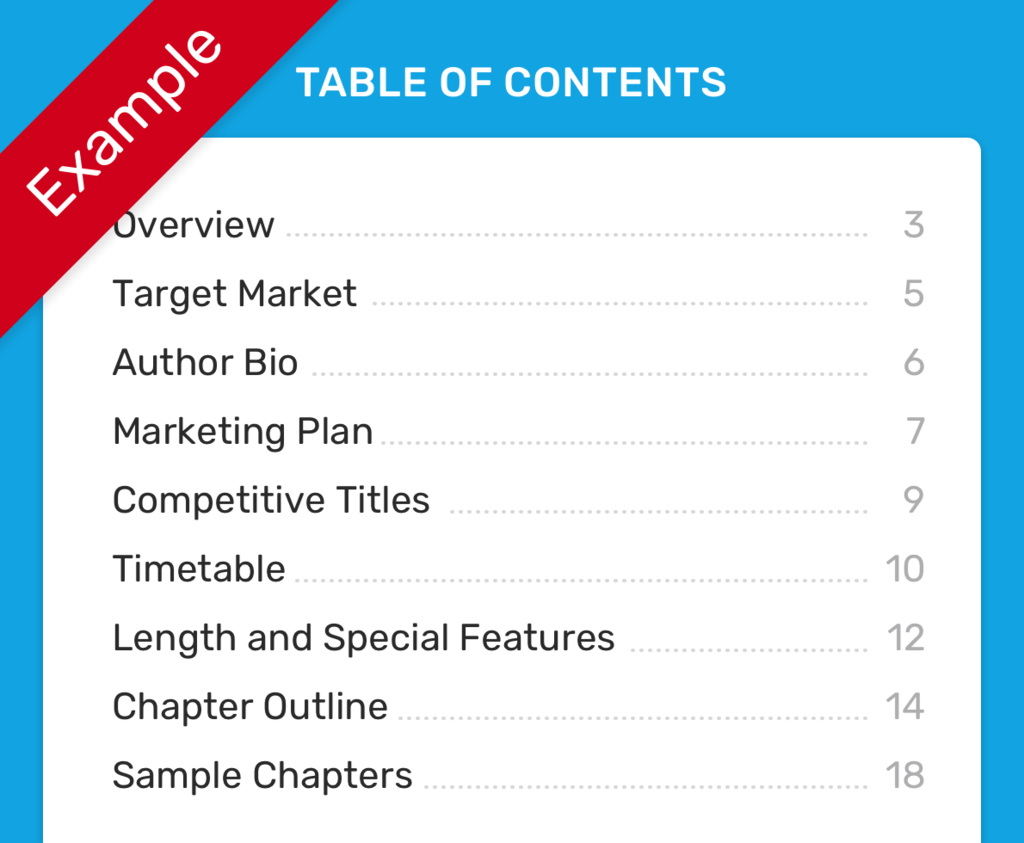
2. Identify your target audience
So you’ve ended your overview on a strong note and successfully hooked the reader. Great! Now, you want to elaborate on why your book is important — a.k.a. why it will sell.
To do this, you need to identify your ideal readers, or the people who will be interested in buying your book. Spoiler alert: no, you can’t say, “My book is for everyone!” A teenager and a working parent simply do not share the same reading interests, and identifying a specific target market is essential in a nonfiction book proposal.

If you’re struggling to put your finger on who your nonfiction is for, try answering these questions, suggested by editor Patrick Price:
- Whose needs do you meet?
- What’s the age range of the audience?
- Where do they live? What’s their lifestyle like?
- What other similar books do they enjoy?
With these in mind, you can search for social media groups where your audience may unite, or survey previously published books on similar topics to see how popular they are. This will give you a better idea of the number of people who may be interested in your book — demonstrating that you’ve got a sizeable target audience will be helpful when it comes to suggesting marketing plans, which we’ll discuss later.
As ghostwriter Barry Fox points out, you are the expert about this specific market. If you’re a historian, you have a better idea than the publisher of the number of students who are interested in your research area. If you’re a doctor, you know your clients’ worries better than anyone else. Lean into that special insight when you research and write this part of your book proposal: let publishers know that there’s demand for a book like yours.
3. Write a strong author bio
Beyond providing you with unique market insights, your experience also makes up your bona fides — giving your readers (and the publisher) faith that you can deliver the answer to what they’re wondering about.
Your author bio should make all of this clear, but should also demonstrate that you’re connected and visible in your field. According to Elizabeth Evans, it should be thought of as a stone that can hit two birds: “First, it details what makes you the authority on your subject; and second, it elaborates on the size of your reach.”
To that end, you can write a strong bio introducing yourself as an author by including information on your:
- Author platform,
- Qualifications (and any seminar you teach),
- Past awards and recognition,
- Previous publications (books and articles),
- Media appearances (e.g. lectures, speeches, interviews…),
- Connections to VIPs in the industry,
- Your personal media contacts, and
- An author photo.
In other words: what about your background, experience, and platform makes you the perfect fit to write this book?
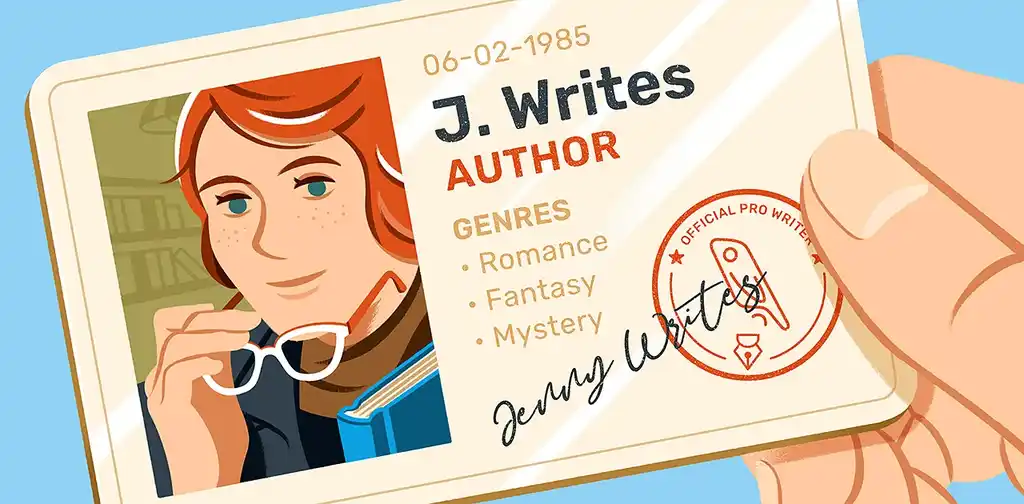
FREE RESOURCE
Grab our Author Bio Template
Use this to write an awesome “about me” in less than 5 minutes.
Keep the Author Bio short and sweet — and exclude all irrelevant information (your eye color, the number of times you won Candy Crush, etc). Be honest and purposeful, highlighting your assets above all.
As well as bolstering the author’s credibility, the bio will also come in handy in the next section.
4. Create a realistic marketing plan

Some publishers may ask you for a marketing plan. If so, know they’re not saying, “Tell me what to do in order to sell your book.” Instead, they want to see that you are currently able to reach your target market via your author platform.
The marketing plan will explain how the writer plans to leverage their pre-existing audience (as established in their author bio) into a successful launch. Again, the key is to be exact and specific — for instance, this isn’t a great example of a marketing plan, as editor Jeff Shreves points out: “I will create a website for the book.”
Consider these questions:
- Are there VIPs in the field you can ask for a blurb from?
- Have you guest spoken anywhere before? Could you reach out to the organizers for a future event?
- How about columns or articles — have you written some before and can you secure another one when the book comes out? What about an interview?
- Have you got a strong subscriber base to your newsletter?
- Do you have connections with bookstores or libraries who can distribute your book, like those of your alma mater, for instance?
You can find more marketing ideas in Barry Fox’s Reedsy Live webinar on book proposals, but the goal is to make use of all the assets you’ve listed in your Author Bio. That way, you show that you can contribute to the overall marketing efforts.
Q: Why are nonfiction authors expected to know about marketing when writing a book proposal?
Suggested answer
You don't need to know about marketing, but you do need to convince them there is a market for your book. Let them know how big you believe the potential market is, why you believe it's so, and how you can deliver that audience.
Tom is available to hire on Reedsy ⏺
Publishers, at root, are marketing companies. They operate in a highly competitive market with tight margins. They don’t like to take risks. If an author, or potential author can demonstrate good marketing chops, and strong social media skills, or – better still – an army of followers, they are far more likely to be taken on. Any published writer will tell you that being a successful author these days involves as much selling as writing.
John is available to hire on Reedsy ⏺
5. Compile nonfiction comp titles for your book
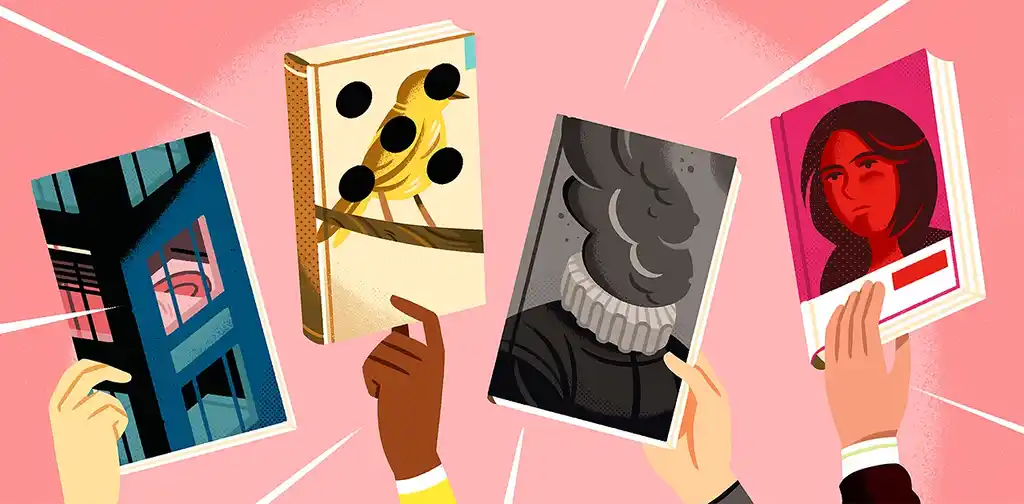
Given all that information, the next question the acquisition editor will ask is whether there’s really space on bookshelves for your title. Others have probably written books on your topic already. So what else can you offer?
To prove to the publisher that your book indeed deserves a place on the shelf, you need to know your predecessors and your competition.
Identify the gap in the market
Where exactly can you find your competition? An actual bookshelf would be a good place to start, for one. Visit the nearest brick-and-mortar bookstore. Figure out where your book would sit, and check out the titles there. Then go onto Amazon.com and search for books in the category you just identified. Scroll down for the “Frequently Bought Together” and “Customers Who Bought This Book Also Bought” titles. This should give you a treasure trove of comparative books. You should note down:
- Author
- Title
- Publisher
- Publishing date
- # of pages
- Price and format
Carefully study the qualitative elements at this point. Who provided blurbs? What can the reviews of each comparative book tell you about the book’s strengths and faults? Is it a bestselling title? If so, why? What features made it stand out? How does your book compare and contrast?
Editor Geoffrey Stone warns you not to compare yourself to well-established authors, since their platform is likely far bigger than yours. Instead, search their books up on Amazon and see what else is suggested in the “Customers who bought this also bought” section. (And for timeliness’s sake, keep to more recent releases!)
In other words, don't go for megahits like Atomic Habits — find respectable but less known alternatives! Having a variety of up-to-date and lesser-known titles will best demonstrate your knowledge of the existing market.
Analyze the competition
Once you pick your 4-8 comparative books, the next step is to evaluate them. Keep it to a paragraph or so for each analysis. Sales figures aren’t obligatory, but might be useful if you can find them.
Now, for each competing title, talk about how your book compares with each of them. Explain how your book challenges, updates, or enhances each of the comp titles chosen. The point of this exercise is to show the publisher how your book is uniquely positioned in the existing market.
Just one other reminder from editor Jeff Shreve: “Don't shy away from describing other books' shortcomings, but be respectful. Odds are that you'll be submitting your proposal to the publishers of many of these competitive titles, after all.”
Q: For nonfiction authors creating a book proposal, do you have any tips for choosing comp titles?
Suggested answer
When selecting comparison (comp) titles for your nonfiction book proposal, think of them as the company your book keeps. They help agents and publishers visualize where your book fits in the market and why it deserves a spot on the shelf. Here are some key tips:
Keep It Recent: Focus on books published within the last five years. This shows you’re aware of current trends and helps publishers gauge the book’s potential in today’s market.
Go Traditional: Choose traditionally published titles. They serve as credible benchmarks for what publishers are looking for, especially in terms of quality and market viability.
Successful but Not Untouchable: Look for books that performed well but aren’t necessarily runaway bestsellers. Aiming too high can make your proposal seem unrealistic, while too niche or obscure might suggest there’s limited demand.
Think Like a Bookbuyer: Imagine where your book would sit on a buyer’s shelf. What titles would sit alongside it? This helps publishers see your book’s relevance in its genre or category.
Finally, explain why you chose each title. Highlight similarities in audience, tone, or subject matter while emphasizing what makes your book distinct. A thoughtful comp list demonstrates market awareness and strengthens your proposal.
Sally is available to hire on Reedsy ⏺
The best advice for comp titles is to include books that have published within the last 3 years and have good sales tracks without necessarily being bestsellers. It's a tough act to balance, especially when you also consider that your comp titles should be from a variety of publishers; you don't want to include four titles that were all published by Penguin Random House and none from any other publisher.
By being well read in the space and knowing what titles are out there, you can craft your comp titles to be a composition of various parts. Your book could take the tone from one title, with the scientific reference from a second title, and combine it with the overall subject matter of a third title, as a rough example.
As for finding comp titles themselves, you need to read, read, and read some more. Reading makes writers, and while you can use websites like Amazon or Goodreads to get a sense of how well a given book has sold or reached its audience, there's no substitute for reading and truly knowing what is contained within a comp title.
Matt is available to hire on Reedsy ⏺
Dear Writers,
When you are choosing comp titles:
- Read, read, read in your genre.
- Read books that your hoped-for agents have represented. You'll find these listed on their websites.
- Frequent your local bookstores and peruse the shelves. Where is your book going to fit on the bookshelf? What titles are on that shelf? Read the blurbs - do those books have similar elements to yours? Read those books. (You might want to get them from the library ... because if you're a bibliophile like me, it can get expensive!)
- Choose books that were published in the last 2 years. If there's an older-but-perfect comp: 3 years on the outside.
- Read the comps you use, cover to cover. Make notes about how the book is like yours, and how it's not like yours. You'll need this information when you are writing your book proposal, and when you are talking to your agent (when they call you because they loved your query letter). You'll need 4 - 5 comps - two for your query letter, and four to five for your book proposal (for nonfiction). Be sure to include the two you used for your query in your book proposal.
- Check out each potential comp on booksellers' websites. How many people have left reviews? If the reviews are 4's and 5's (out of 5) and the review count is high (in the hundreds at a minimum, in the thousands, even better), that's a good comp. Agents are going to check those numbers, so choose books that have sold well and have lots of positive reviews from readers. But...
- Don't choose a bestseller, even if it's a perfect comp. Keep researching. Look up the book on Amazon and check out the "Customers ... Also Bought" listings under the book's blurb. The books listed there may lead you to other comps that will work for you.
- Check out comps on Amazon and click on the "See All Details" link. What are the book's Amazon ratings? If the ratings are good, choose the book as a comp. If the ratings are not great, record the book's publication information and ratings (you might need them later) and move on.
- On the Amazon ratings list for each book, you'll find a series of keywords categorizing each book. Use those keywords to search for more books in your genre and sub-genre.
Good luck researching your comps!
Michael I
Michael is available to hire on Reedsy ⏺
6. Include a chapter outline
Now that all market-related issues are covered, you’re ready to finally elaborate on your actual book! By this point, the publisher’s hopefully on board with your idea — they just need to know that your plans for actually writing the book are viable.
Show that a full manuscript is right down the road by providing a chapter-by-chapter sketch of your book (just 1-2 paragraphs per chapter will do). If you don’t have a clear idea about where to begin yet, perhaps this guide on how to outline a nonfiction book can be of some use.
Remember that the chapter outline will show your approach to your idea. To that end, make sure that the progression of your chapters is clear and purposeful. Editors acquire books across a broad list, so you should also steer clear of industry-specific jargon such as: “This chapter will examine MSCI’s adjusted EBITDA, EPS, and beta of 1.5 in the context of its 2016 non-GAAP measures.” That may only fetch you glazed eyes in return!
7. Provide sample chapters from your manuscript

While you don’t need to produce a full manuscript yet, publishers will expect a sample chapter or two, demonstrating that you don’t just have the ideas — you also have the skills needed to put them into writing.
In that spirit, you want to pick a chapter that best shows the essence of your book. Remember the hook at the beginning — which chapter exemplifies the selling point you promoted? Our Rwandan author from the book proposal example earlier might find the first chapter describing the lived experience of the genocide impactful. Or if you’re writing a business book, you might find that a later chapter about how your business took off after some experimentation in strategy could better show your potential. Try and find heavy-hitting chapters that stand well alone.
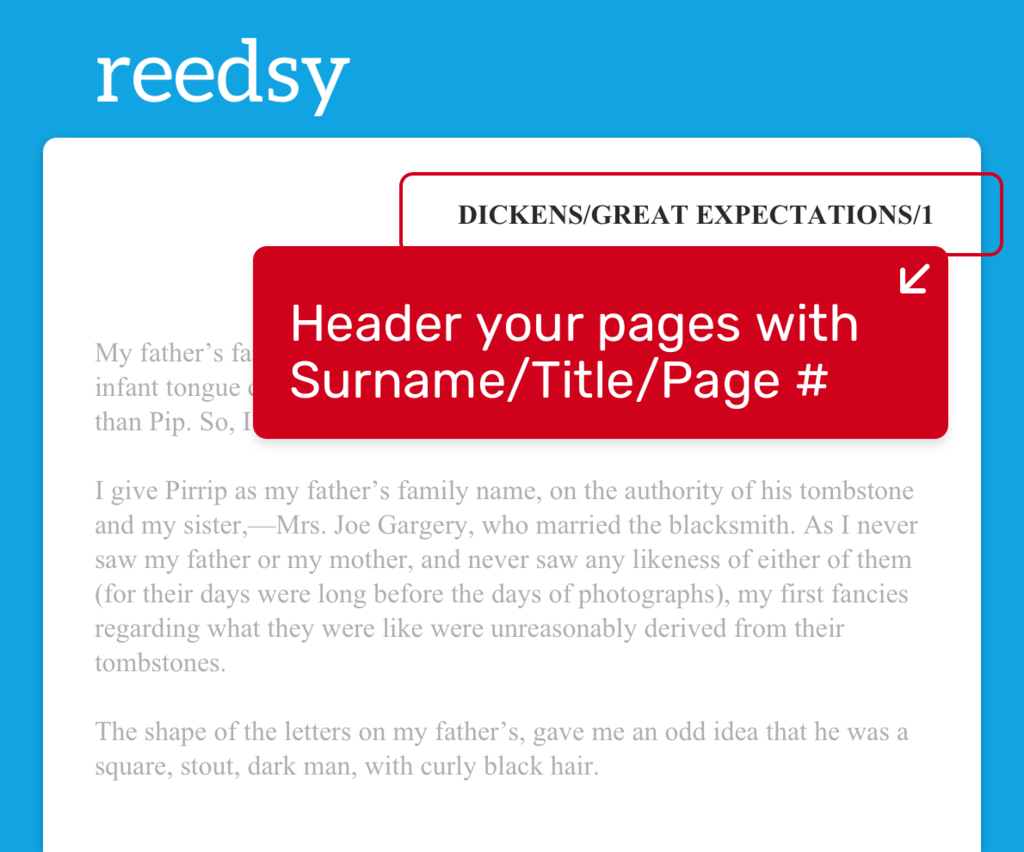
Sample chapters should follow the rules for proper manuscript formatting.
Download our free manuscript format template to present your sample chapters in the most professional way.
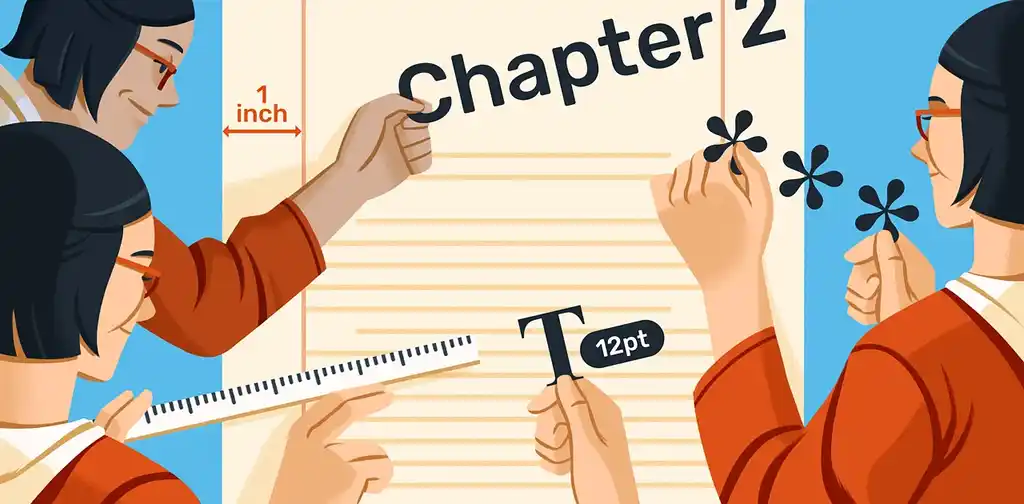
FREE RESOURCE
Manuscript Format Template
Get your manuscript ready for submission to agents and publishers.
Because you want the sample to strengthen other elements of your proposal, Jeff Shreve says that he likes to leave this to the very end of the proposal-writing process: “Once you have the full chapter outline and the overview nailed down, it will become much clearer which chapter you should highlight. And this can help you avoid duplicating the overview.”
Q: Which part of the book proposal do agents and publishers care about the most?
Suggested answer
At the end of the day, selling books is a business, i.e., it needs to make money. Of course, books also need to be well-written, meticulously researched, and creatively compelling, but no matter how brilliant a book might be, if nobody buys it, publisher won't consider it to be a success. All of this why the marketing section of the proposal is often the most important part of the proposal--it's where authors lay out why they think readers will care about their book and buy it. What problem does the book solve? Who are the readers and how will they find the book? What aspects of an author's background, training, connections, audience involvement, etc. will allow them to reach their readers?
Marketing is key. Being able to connect with prospective readers and their communities is key. Fortunately, many books have been written about marketing strategies and about how to write successful proposals, so even if an author has zero marketing experience, it's very possible (and even fun!) to explore marketing and PR tactics.
Lisa is available to hire on Reedsy ⏺
What agents and publishers want is to get a feel for this book, your ability to write it, and its ability to sell a lot of copies. All parts of a proposal are important, but the agents and publishers are very interested in concrete evidence that you are going to sell a lot of copies. So, should you have a social media following in the millions, your own podcast, thousands and thousands of employees who will be required to buy a copy, you should mention that in your proposal.
Tom is available to hire on Reedsy ⏺
Agent and publishers are busy people. They often don't get beyond the first sentence of a submission so it's important to make the opening of your sample chapters as intriguing as possible. The same goes for the query letter - it should be brief, succinct, professional and clearly outline what you've written, why you've written it, how many words it is and whether you've been published elsewhere.
Vanessa is available to hire on Reedsy ⏺
In my view, every part of the proposal is important. You need to show you have a clear vision of the content and the expertise to write it. You need to show you know who your audience is and how to reach them. You need to convince an editor that your idea is timely and that there's still room in the niche. Fundamentally, a proposal is a sales document. Of course it needs to express your passion for the subject, but unless it's a vanity project, it's equally if not more important to persuade an editor that the book will sell.
Janet is available to hire on Reedsy ⏺
This is a great question, and shows an awareness of market realities that you need if you’re writing genre fiction. The short answer: Read. Read extensively in the genre. And read actively, with a pen in hand. Make notes about the characters you encounter. Why do they work? What makes them so compelling? Usually, they’re going to be active, they’re going to drive the action forward. Creating great characters in genre fiction is about knowing the types of character that typically appear in your genre, but making them sufficiently distinctive that they stand out. Walking that line is where the magic happens. But if you don’t read, if you don’t know the genre inside out, you’re going to end up with characters that just won’t fit. I write middle grade fiction, which offers a wide variety of character types, but there are still rules. Your main characters are most likely children, and because of your audience, you have to tread carefully with adult topics. All genres will have their own rules and guidelines.
John is available to hire on Reedsy ⏺
8. Finish with your writing timeline
At this point, you can zero in on the logistics of writing your book. Let the publisher know:
- How long you might take to write the book;
- What range the word count might fall in; and
- Whether you need any assistance throughout your process.
Assistance might mean photographic material, special design needs for tables and graphs, or perhaps even a research assistant. Of course, these are open to discussion once you get an offer, but publishers will appreciate the heads-up!
Once you’ve written a pitch that ticks all the boxes, there’s nothing left to do but submit your proposal to publishers. For help keeping track of your submissions, download our free query tracker spreadsheet.
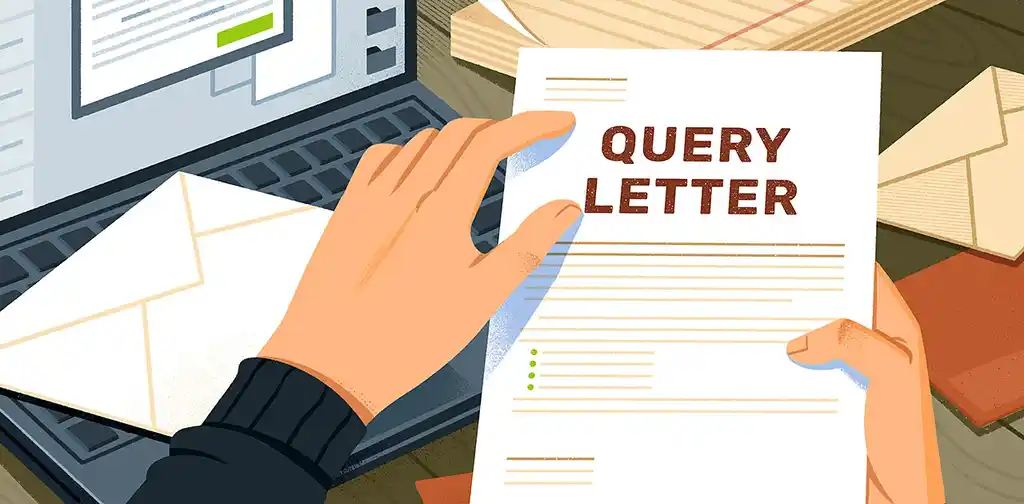
FREE RESOURCE
Query Submissions Tracker
Stay organized on your journey to find the right agent or publisher.
Download: Free Book Proposal Template
As a parting gift, we recommend that you download our free book proposal template to structure your book proposal.
We hope you’ve found all the tools and assistance you need to write a nonfiction book proposal to help you secure the right deal.

FREE RESOURCE
Book Proposal Template
Craft a professional pitch for your nonfiction book with our handy template.

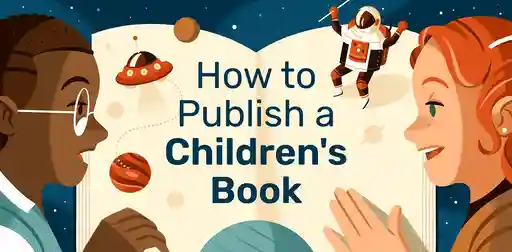




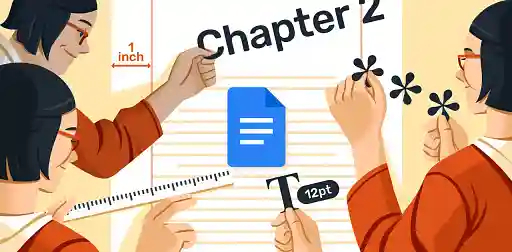


5 responses
liladiller says:
08/03/2018 – 03:42
Under #5, where is stage 2?
↪️ Reedsy replied:
14/03/2018 – 20:24
Hi Lila — Stage 2 is the analysis portion of the Competitive Titles section :) It's all evaluation of your 4-8 comps from that point on.
Patty says:
04/06/2018 – 11:17
The above post seems to be for commercial non-fiction. What about a memoir? Wouldn't that be different? How?
↪️ Reedsy replied:
07/06/2018 – 04:45
You're correct, Patty — memoirs fall into a bit of a gray area when it comes to book proposals. Could you drop us an email at service@reedsy.com with a brief description of your memoir? I'll be able to point you in the right direction from there :) – Yvonne from Reedsy
Anne says:
24/09/2019 – 20:12
What about a series? My book is an overview with human interest stories, how to do projects that lasting records of the several heroines.